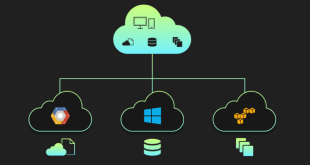Welcome to the future of cloud computing—Next-Gen Serverless Computing! In this blog, we will delve into the revolutionary technology that is transforming the landscape of public cloud services. Say goodbye to traditional server management woes and hello to a more efficient and cost-effective approach. Join us as we explore the ins and outs of this cutting-edge solution that is propelling businesses into a new era of computing.
Understanding Serverless Computing
Serverless computing, despite its name, does not mean there are no servers involved. Rather, it refers to a cloud computing model where the cloud provider dynamically manages the allocation and provisioning of servers, relieving developers of the burden of server management. This enables developers to focus solely on writing and deploying code, increasing their productivity and streamlining the development process.
The Advantages of Serverless Computing
Scalability and Flexibility
Serverless computing allows applications to automatically scale based on demand. It can handle sudden traffic spikes without any manual intervention, ensuring smooth and uninterrupted service for users. Businesses can scale up or down as needed, optimizing resource usage and costs.
Cost-Efficiency
With traditional server setups, you often pay for idle resources. Serverless computing, on the other hand, charges you only for the actual execution time of your functions, reducing operational costs significantly. This pay-as-you-go model makes it highly cost-efficient, particularly for small to medium-sized enterprises.
Faster Time-to-Market
By eliminating the need to manage servers, developers can focus on coding and deploying applications faster. Serverless computing reduces development and deployment time, enabling businesses to launch new features and updates more rapidly, gaining a competitive edge in the market.
Reduced Operational Complexity
Serverless computing abstracts the underlying infrastructure, simplifying application development and maintenance. It removes the complexities of server provisioning, software updates, and security patches, allowing developers to concentrate on core business logic.
Key Components of Serverless Computing
Functions as a Service (FaaS)
At the core of serverless computing is FaaS, which allows developers to execute code in response to events without managing the infrastructure. Popular FaaS platforms include AWS Lambda, Google Cloud Functions, and Microsoft Azure Functions.
Backend as a Service (BaaS)
BaaS platforms provide pre-built backend functionalities, such as databases, authentication, and file storage. This saves developers valuable time and effort, accelerating the development process.
Real-World Examples of Public Cloud Services Using Serverless Computing
Netflix
Netflix utilizes serverless computing for various tasks, such as encoding and delivering video content, personalizing user recommendations, and handling user authentication. The scalable nature of serverless architecture seamlessly accommodates Netflix’s vast user base.
Airbnb
Airbnb leverages serverless computing to handle user interactions, booking requests, and notifications. The ability to scale effortlessly allows Airbnb to maintain a smooth user experience during peak booking periods.
Slack
Slack utilizes serverless functions to power its chatbot integrations and real-time notifications. Serverless computing ensures efficient handling of thousands of simultaneous interactions across the platform.
Security Considerations for Serverless Computing
While serverless computing offers numerous advantages, it is crucial to address security concerns. As applications rely on third-party cloud providers, data protection, and access control must be carefully implemented to safeguard sensitive information.
Future Prospects and Innovations
The future of serverless computing is promising, with continuous advancements and innovations in cloud technologies. We can expect even greater scalability, improved security features, and enhanced integration capabilities.
Final Words
Next-Gen Serverless Computing is revolutionizing the world of public cloud services. With its scalability, cost-efficiency, and reduced operational complexity, businesses are embracing this technology to stay ahead in the competitive landscape. Embrace the power of serverless computing to unlock new possibilities and accelerate your business growth.
Frequently Asked Questions
Is serverless computing suitable for all types of applications?
While serverless computing is a powerful solution for many use cases, it may not be ideal for applications with long-running tasks or applications that require constant high computing resources.
How does serverless computing handle spikes in traffic?
Serverless platforms automatically scale in response to traffic spikes, ensuring smooth performance without manual intervention.
Are there any cost considerations with serverless computing?
Serverless computing can be cost-effective for applications with varying workloads, as you only pay for the actual execution time of functions.
Is serverless computing more secure than traditional server setups?
Serverless computing relies on cloud providers’ security measures, and while they offer robust security features, it’s essential to implement additional security measures specific to your application.
Can serverless computing support legacy applications?
While serverless computing is more suitable for cloud-native applications, with the right adaptation and integration efforts, it can support legacy applications to some extent.
 webfily
webfily



